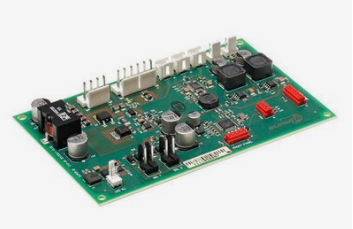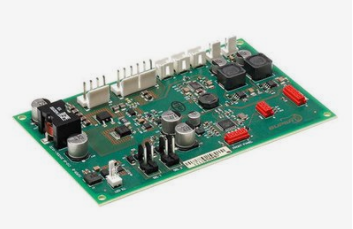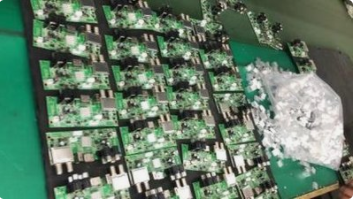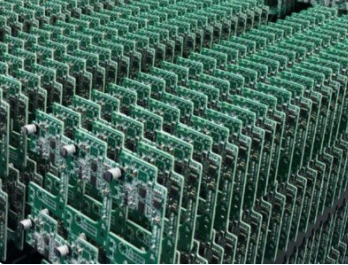
Many PCB factories mistakenly believe that PCB drilling must be completed at low feed rate and low speed. This was true in the past, but today's carbide bits are different.
In fact, users can greatly improve PCB productivity and comprehensively reduce the cost per hole after selecting the right drill bit. For end users, there are four basic types of drills with carbide cutting edges to choose from: solid carbide, indexable inserts, welded carbide tips and replaceable carbide tips. Each has its advantages in specific applications.

The first solid carbide bit is used in modern PCB machining technology. It is made of fine grain cemented carbide and has TiAlN coating to improve tool life. These self centering drills have excellent chip control and chip removal in most workpiece materials due to their specially designed cutting edges. The geometric angle and good precision of the self centering of the integral carbide bit ensure that high-quality holes without any further processing are obtained.
The indexable bit covers a large diameter range when the drilling depth is from 2XD to 5XD. They can be used for both rotary applications and lathes. For most workpiece materials, these drills use a self centering geometric angle to reduce cutting force and have good chip control.
The holes processed by the welding drill have fairly high surface finish, high dimensional accuracy and good position accuracy, and no further finishing is required. Due to the cooling through-hole, the welding drill bit can be used for machining centers, CNC lathes or other machines with sufficient stability and speed.
The last type of drill bit combines the steel cutter body with the replaceable integral cemented carbide drill point called Crown. This kind of drill can obtain higher productivity with lower processing cost on the premise of providing the same precision as the welding drill. This new generation of bit with carbide crown provides accurate size increment and has a self centering geometric angle to ensure high machining size accuracy.
Carefully consider tolerance and machine stability
PCB factory should select drill bit according to specific tolerance on processing. Smaller diameter holes usually have tighter tolerances. The bit manufacturer then classifies the bit by specifying the nominal bore diameter and upper tolerance. Among all types of drill bits, the integral cemented carbide group drill bit has the most tight tolerance. This makes them the best choice for drilling holes with very tight tolerances. The tolerance from 0 to+0.03 mm when the factory can drill holes with an integral carbide bit with a diameter of 10 mm.
On the other hand, a welding drill or a drill with a replaceable carbide crown on a mountain high can process holes with a tolerance from 0 to+0.07mm. These drills are often a good choice for drilling production and processing. Indexable bit is a kind of bit for heavy work in industry. Although their upfront cost is usually lower than other drills, these drills also have the largest tolerance, which can range from 0 to+0.3mm based on the diameter/hole depth ratio tolerance. This means that the end user can use an indexable blade drill when the tolerance of the hole is large, otherwise they must be prepared to finish the hole with a boring cutter.
Along with the tolerance of the hole, the factory needs to consider the stability of the machine tool in the selection process. Because the stability ensures the tool life and drilling accuracy. The factory shall verify the status of the machine tool spindle, fixture and accessories. They should also consider the inherent stability of the bit. For example, the integral carbide bit provides the best rigidity, which enables it to obtain high accuracy. On the other hand, the indexable blade bit is prone to deflection. These drills are equipped with two blades -- an inner blade in the center and a blade extending outward from the inner blade to the edge -- initially only one blade is used for cutting. This creates an unstable situation that causes the bit body to deflect. Moreover, the longer the drill length is, the greater the deviation is. Therefore, when using the indexable bit with 4XD and above, the factory should consider reducing the feed rate at the first millimeter and then increasing it to the normal feed rate.
The welding bit and the convertible crown bit are designed as two symmetrical cutting edges forming a self centering geometric angle. This stable cutting design allows the drill bit to enter the workpiece at full speed. The only exception is that when the drill bit is not perpendicular to the machined surface, it is recommended to reduce the feed by 30% to 50% during cut in and cut out. The steel bit body allows slight deflection, which makes it possible to successfully apply it to lathes. However, the solid carbide bit with good rigidity may be easily broken, especially when the workpiece is not well centered. Don't ignore the problem of chip removal encountered by many factories. In fact, poor chip removal is the most common problem in drilling, especially when machining low carbon steel. And no matter what kind of drill is used.
The factory often uses external cooling to solve this problem, but this is only applicable to the hole depth less than 1XD and to reduce the cutting parameters. Otherwise, they must use the proper coolant with the flow and pressure matching the hole diameter. For machine tools that do not have spindle center cooling, the factory should use a device for turning the coolant from outside to inside. Remember, the deeper the hole, the more difficult it is to remove chips, and the greater the cooling pressure is required.
Always check the minimum coolant flow level recommended by the PCB manufacturer. At low flow rates, it may be necessary to reduce the feed rate.
Check Life Cycle Cost
Productivity or cost per hole is the biggest trend affecting drilling today. This means that bit manufacturers must find ways to combine certain processes and also develop bits that can adapt to high feed rates and high-speed machining. The latest bits with replaceable solid carbide tips provide superior economy. Instead of replacing the whole bit body, the end user only buys the cemented carbide bit whose price is equivalent to regrinding a welded bit or an integral cemented carbide bit. These crowns are easy to replace and accurate. The factory can use multiple crowns on a drill bit body to drill holes of several different specifications.
This modular drilling system reduces the inventory cost of drills with diameters ranging from 12 mm to 20 mm. In addition, the utility model eliminates the cost of a backup drill bit when a welding drill bit or an integral cemented carbide drill bit is reground.
When reviewing the cost per hole, the factory should also take into account the total tool life. Generally, for a factory, an integral cemented carbide drill can be reground 7 to 10 times, while a welding drill can only be reground 3 to 4 times. On the other hand, the steel cutter body of the crown type drill can be replaced with at least 20 to 30 crowns when processing steel parts. There is also a question of productivity.
PCB welding bit or integral cemented carbide bit must be reground; Therefore, the factory tends to reduce the speed to avoid chip sticking. However, the bit with replaceable head does not need to be reground, so PCB factories can use sufficient feed rate and speed during processing without worrying about the chip sticking of cemented carbide materials. Compared with the welded bits or solid carbide bits, new crown type bits have more consistent tool life.
In many cases, the reground bit cannot reach the performance of the new bit. This is because when regrinding, it is difficult to make the cutting edge shape and edge grinding identical to the new drill bit. Improper edge grinding will make the drill bit easier to stick chips, require greater torque or power to process, or generate more heat, thus shortening the tool life.






